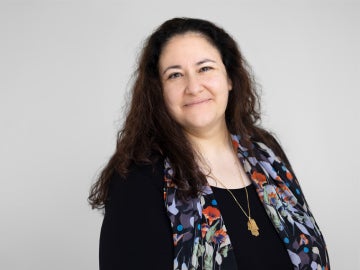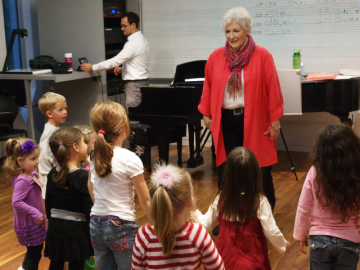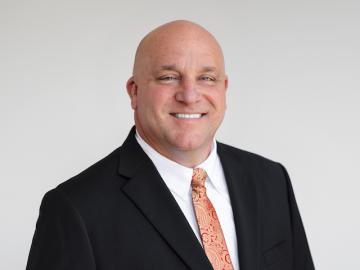Campus News
Senior Symposium 2019 Preview
April 25, 2019
Communications Staff

The Office of Undergraduate Research invites all members of the campus and community to celebrate the scholarly and artistic achievements of members of the Class of 2019, at the10th annual Senior Symposium on Saturday, April 27.
More than 100 seniors and fifth-years on 27 panels will each give a brief presentation about work they performed for honors, capstones, or research they conducted individually or with a faculty mentor. The symposium will examine a broad range of topics such as “Love & Relationships in the Digital Era” and “Project Hózhó: Youth, Arts, and Environment in the Navajo Nation.”
The symposium takes place in the King Building. Concurrent panels begin at 9:30 a.m. and continue through 8 p.m. Ti Ames ’19 and Professor of Theater and Africana Studies Caroline Jackson Smith will give the 11 a.m. keynote address in King 106, about black performing arts through a focus on a recent production of Tarell Alvin McCraney’s play The Brothers Size, which Ames directed. A reception will take place from 6:20 to 7:20 p.m. in the King Building’s second-floor lounge.
See additional event details and access the full schedule of presentations
The following are a sampling of abstracts from the student presentations
Presenter: Pang Fei Chiang
Scents and Sensibilities: Gay Identities in Malaysia
For a lot of Malaysians, the kitchen serves as a domestic space where interactions between a mother and a child take place. Many Malaysian students very commonly spend their afternoons studying at the dining table while their mothers cook and tutor them at the same time. It is a site of memory where familial identities and personal identities are constructed. As such, children are more connected to their stay-at-home mothers, who usually happen to be the first parent that queer Malaysians tend to come out to.
Therefore, the kitchen is an intensely personal space where encounters with food play a huge role in mobilizing the sensory dimension of memory, through a concoction of taste, sound, and smell, which are deeply rooted in the tempo of everyday life. For other folks, the kitchen serves a space that transports one back to their childhood by means of a particular taste or smell, thereby reflecting past events and experiences, as well as memory of anticipated rituals and celebrations such as Christmas dinner or Ramadhan meals.
Using audio recordings, spices, and portraits of the Malaysian gay community and their mothers, Scents and Sensibilities is a mixed-media installation that incites nostalgia of the kitchen as a private space of joyful childhood memories, but also of potential conflicts that reflect the realities of tension and discrimination against the gay community.
Presenter: Daniel Gonzales
Progression of State & Federal Education Policy, Funding, and Legislation in Public Schools Since 1983
The purpose of this work is to analyze:
- the ways in which the Cleveland Metropolitan School District (CMSD) has funded music education in public schools since the 1980s.
- the kinds of musical opportunities that are available to students during the school day and the factors that affect access to those opportunities.
- why access to these opportunities is important.
As a future music educator, these issues are extremely pertinent to the settings I will find myself in after Oberlin.
My research consisted of delving into scholarly journals, books, an Oberlin thesis from 1999, and self-conducted interviews of Clevelanders who grew up in or around the city. From my analysis, I assert that today, students in CMSD do not have adequate opportunities to learn music and that overarching racial dynamics tied to a deep history of segregation contribute significantly to this problem.
Presenters: Brian James, Kieran Minor, and Rashad Saleh
Project Hózhó: Youth, Arts, and Environment in the Navajo Nation
The goal of our project, Project Hózhó, is to create an enduring collaborative summer program for youth on the Navajo Nation that engages complex environmental, cultural, and political issues through photography and filmmaking. We collaborated with local organizations like the National Park Service, Indian Health Service, and the local school district to create curriculum for grades 7-12, executed over a four-week period at Canyon de Chelly National Monument in Chinle, Arizona.
Through classroom workshops, field shoots, and a guest photography workshop with Will Wilson ’93, students created a portfolio of a dozen works ranging from documentary to sci-fi. Student work will be combined with hours of our own documentary footage and oral histories to create an interactive website about environmental change in the Chinle Valley. This project shows the value of interdisciplinary learning, collaboration, and entrepreneurship in crafting creative approaches to community-centered social and environmental justice.
Presenter: Alexandra Roman
Love & Relationships in the Digital Era
We live in a world dominated by technology. In this environment, how have relationships and love been affected? The purpose of this research is to examine the possibility of maintaining meaningful connections, and ultimately love, in a society saturated with dating applications and accessible pornography. The two themes driving this argument are the “emotional” and the “physical.”
The former will be considered through an in-depth exploration of what constitutes an authentic relationship through the lens of Existentialist philosophy, further articulated by contemporary philosophers from A. Ben-Ze’ev to Alain de Botton to W. Helm. The latter is articulated through an analysis of Austin’s speech act framework of locutionary and illocutionary acts as applied to pornography. My findings ultimately sustain the claim that technology has affected the way we love and engage in relationships by promoting power imbalances and through a constant perpetuation of identity delusions.
Presenter: Hannah Tishkoff
Sensing the Visual: A Critical Disability Studies Approach to the Allen Memorial Art Museum
The exterior of Oberlin College’s Allen Memorial Art Museum boldly states “The Cause of Art is the Cause of the People.” While this sentiment from marxist artist and author William Morris may be inspiring, the reality is that meaningful experiences with art in museums are often inaccessible to people with disabilities. Beginning with the dominance of the visual over all other senses, museum space produces a variety of physical and psychological barriers that prevent people with disabilities from entering or enjoying museums.
This project examines the Allen’s commitment to accessibility for visitors of all abilities while taking into account its unique position as a campus art museum with a world-renown collection. I begin by comparing the Allen’s physical space with the guidelines put forth by the Americans with Disabilities act of 1990, as well as the Smithsonian Guidelines for Accessible Exhibition Design.
Based on my research I have outlined suggestions for the Allen to better accommodate visitors of all abilities. These include a focus on multi-sensory exhibition design, which provides opportunities for engaging all five senses in the gallery, as well as increased collaboration with local schools and disability services at the college. I conclude by emphasizing that everyone learns and experiences the world differently; while instituting accommodations would undoubtedly increase the value of the museum experience for visitors with disabilities, everyone benefits from more inclusive practices.
Presenter: Sage Vousé
Towards More Complicated Human Security: Solving the Measurement Paradox
In the aftermath of the Cold War and in preparation for the 1995 World Summit on Social Development, Pakistani theorist Mahbub ul Haq argued that global security should include economic, food, health, environmental, personal, and community security. This idea of an expanded and human-focused threat model, referred to as human security, readily ballooned into multiyear discussion of the failings of national security, the benefits of rejecting nationally-based security models, and the nature of safety itself.
Since the 1995 definition of human security, approximately seven different measurement methodologies have emerged. None of these methodologies encompass every part of the 1995 definition. A decade into human security discourse it was concluded that the potential to measure human security was bottlenecked by a paradox: the more a definition attempted to encompass of Mahbub ul Haq’s definition, the less tractable and feasible it became.
This project demonstrates that an interdisciplinary, quantitative approach can potentially solve this paradox, directing the literature towards issues of data science and ethics which increasingly govern our age. To do so, it outlines a tractable means of quantifying, combining, and analyzing each subsection of the 1995 definition and, as a case study, shows how survey data collected in the Current Population Survey by the United States Census Bureau can be utilized to form a predictive model for food security.
You may also like…
Remembering Former Visiting Assistant Professor Leila Ben-Nasr
Leila Ben-Nasr, a former visiting assistant professor of comparative American studies, died on November 28, 2025.
Oberlin Community Remembers a Beloved Retired Professor
A member of Oberlin faculty for 13 years, Peggy Bennett was known by students and the Oberlin community for creating and leading MusicPlay, a preschool classroom and learning lab run as part of the...
Eric Rooks Named Director of Campus Safety at Oberlin
Longtime public servant emphasizes collaborative partnerships and kindness.


